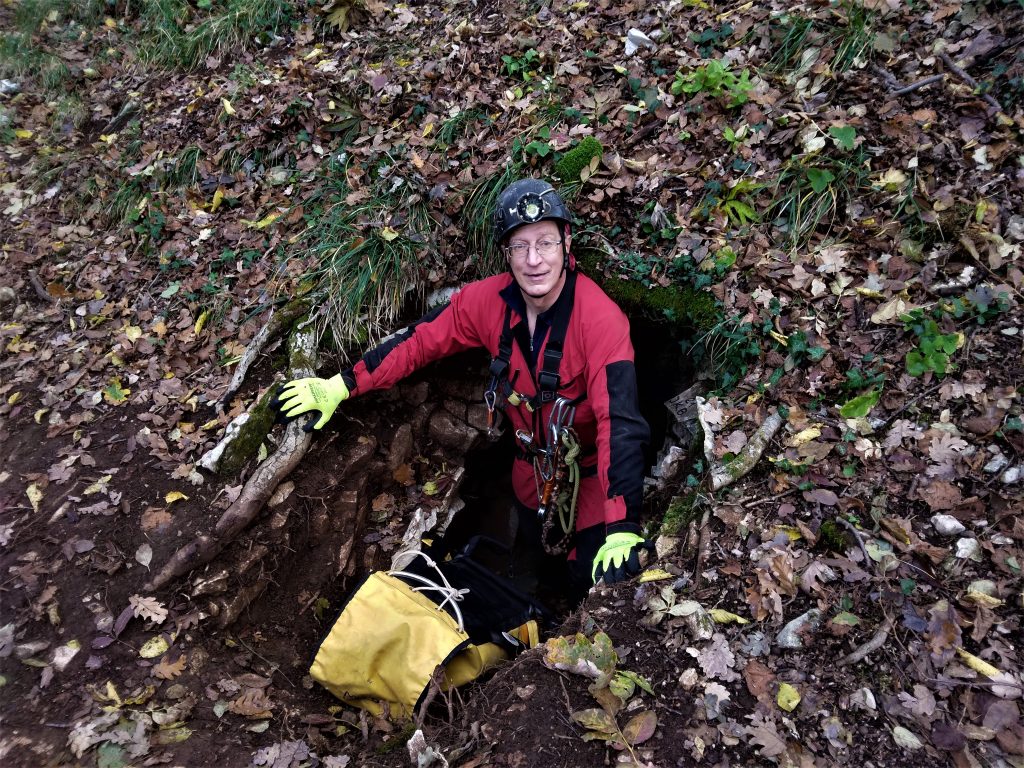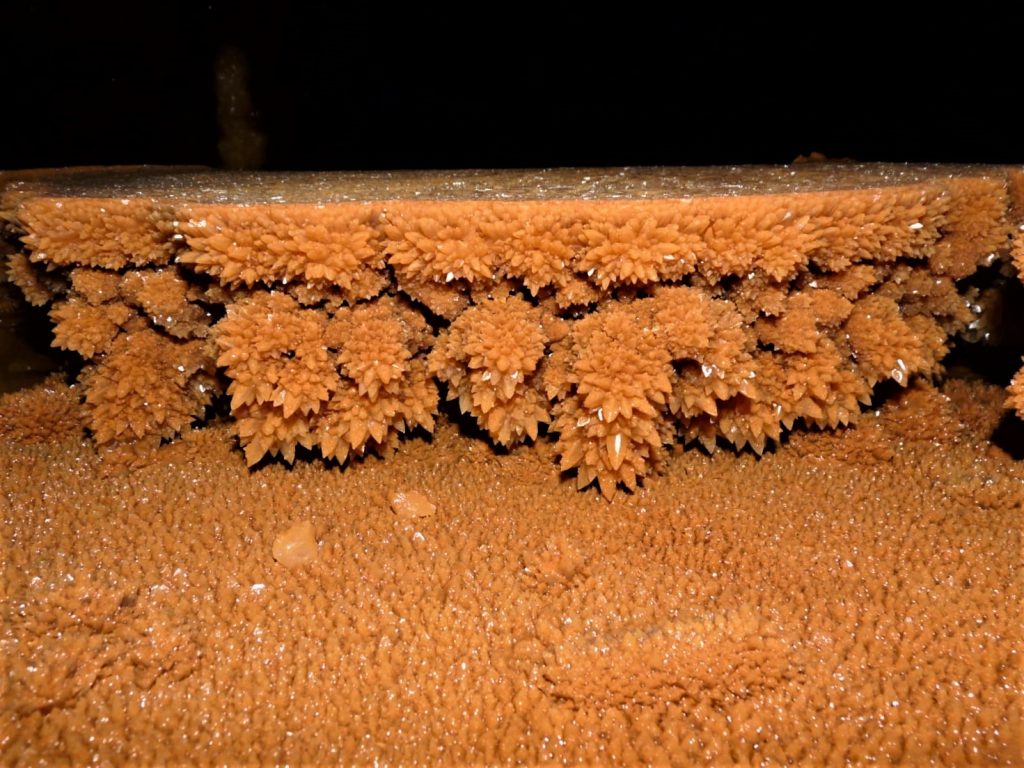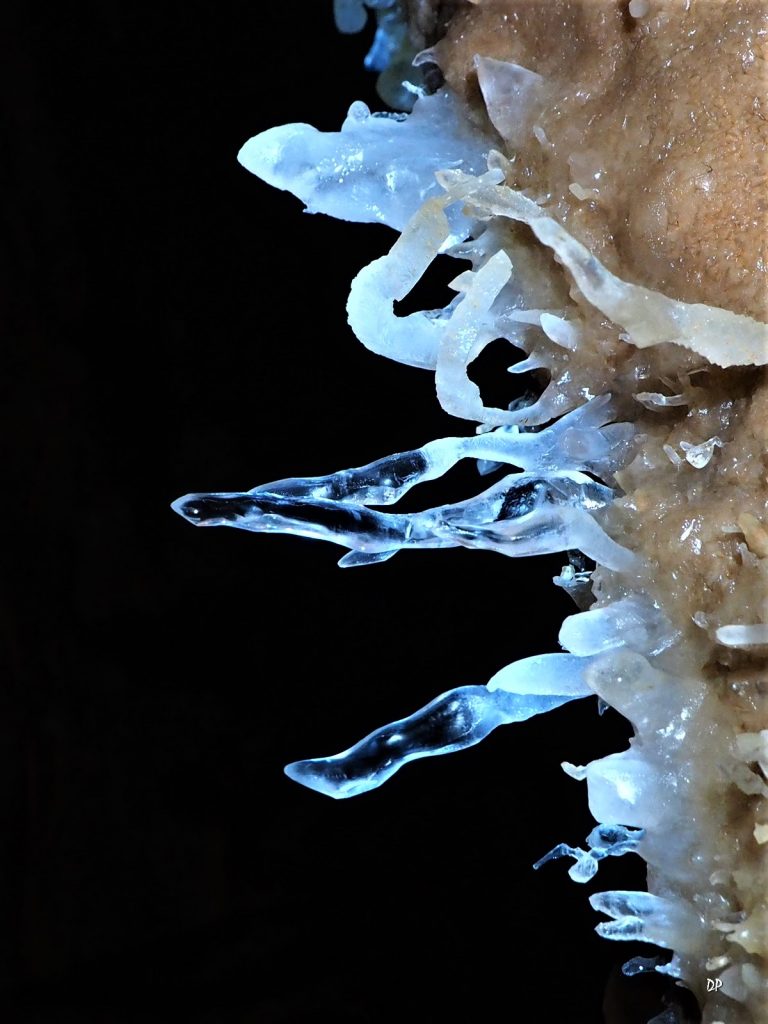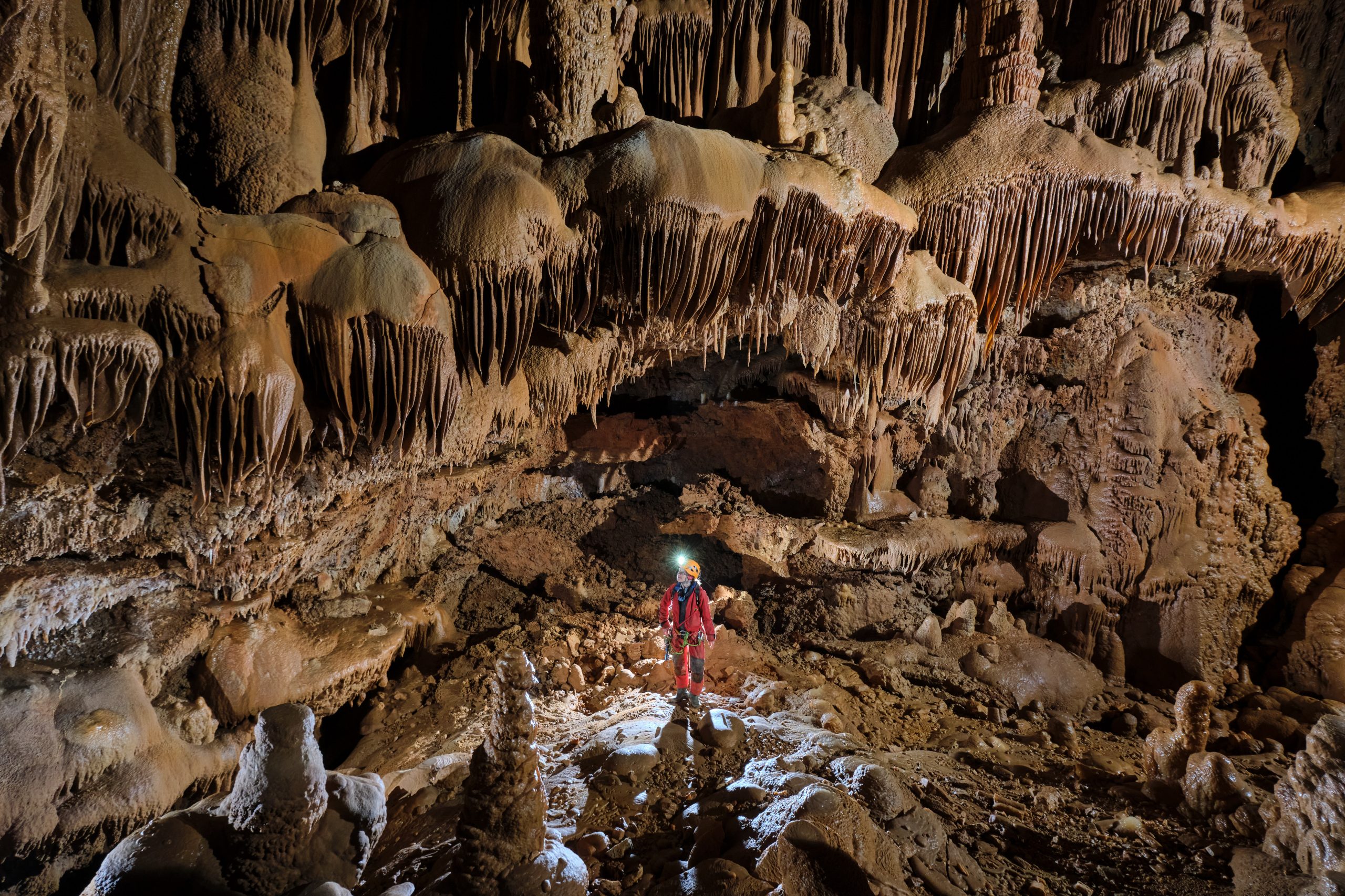Interview with Mauro Kraus, One of the Two Leaders of the Expedition
by Alessandra Ressa
Its stunning magnificence had remained hidden for millennia in the undergound darkness of Trieste until just two weeks ago, when two expert speleologists, Mauro Kraus and Claudio Bratos, uncovered the latest treasure of Carso.
It is probably Trieste’s fourth biggest cave with an incredible variety of diverse formations, all sharing their pristine beauty. Named after speleologist and friend Stojan Sancin, who has recently passed away, Stojan Jama (Jama meaning cave in Slovenian) is located between the Karstic villages of Padriciano and Basovizza, not far from the Slovenian border.
It contains several pits and passages leading to wide chambers, the biggest unveiled so far measuring 130 meters in length and over 60 meters at its highest point. Speleologists believe that strong air currents inside the areas explored could lead to further great chambers now blocked by collapsed rock and mud.
We interviewed Trieste’s speleologist Mauro Kraus, 60, president of Gruppo Speleologico San Giusto.

How did you find the cave?
We were told by a local landowner that on the side of a dolina (a typical Carso sinkhole that looks like a circular depression, usually caused by the collapse of an ancient underground rock “roof”) there were two small, apparently unremarkable holes. He explained that the holes were breathing. When we investigated the site, we realized that both let out great amounts of air. This was a clear sign that a large sized cave lay underneath. Needless to say, we got really excited. We knew that this was an area of majestic caves, Grotta Impossibile and Grotta Skilan, second and third largest caves in Trieste after Grotta Gigante, are very close to the site. Slowly and with great apprehension, we dug to widen one of the holes and went inside.
What did you find?
We entered the first well and went through tiny vertical passages, we dug where needed to avoid getting stuck, until we realized our surroundings had widened and we were in complete darkness. We couldn’t see anything, our lamps were not able to illuminate the chamber we had just reached. And that was because it was enormous! I can’t describe the feeling of elation when I realized this. We knew we were facing an amazing discovery, but we could not see it, only sense it. In the hours that followed we proceeded to go around this dark space until we understood it was a gigantic, bean-shaped cave. When Claudio and I touched the bottom and looked around, we hugged for a long time. I couldn’t believe we had discovered such an immense cave. And, what’s more, it is entirely covered in incredibly beautiful intact concretion, with stalagmites and stalactites everywhere, white, brown and orange, some reaching over 20 meters in height.

What’s special about this cave?
Some of the concretions are truly unique. They are very diversified, formed by millennia of deposits of different minerals. Some look like jewels, or giant crystals, others have formed in complete defiance of the laws of gravity, thus giving shape to flower and diamond-like formations. They are incredibly beautiful and the only reason why they are so well preserved is because no human has ever set foot in this cave before.

Is the exploration concluded? Is the cave going to be open for speleo visits?
The exploration is far from being concluded. At the bottom of the great chamber we have found another passage leading to another, smaller chamber. This second chamber too is filled with incredible concretion. From there, we have identified further passages, obstructed by mud and debris, with strong air currents to reassure us that more treasures are yet to come. Claudio and I are currently spending each day in the cave trying to open passages and see where they lead to. We are quite sure it is not connected to any other cave in the area. But you never know. Of course like all caves in Carso, this too will be open for exploration once safely reinforced. And this is the real dilemma for cave lovers. Of course the site is not our property as there is no regulation on underground natural spaces in Italy, but should we preserve it as it is or should we allow speleologists to visit it? Who should the privileged ones be? Are people going to pollute it, damage it, take home concretion as souvenirs like they did in the past? Many caves have been entirely ruined by frequent visits. Let alone those used to legally and illegally dump industrial waste or as sewage cesspools until the 1980s. For sure, this cave, like most Carso caves, will never become a tourist destination.

You were born and raised in Trieste. What is the thing that you like most about your city?
Of course I love Trieste because it’s where it all began. Here is where speleology was born and is most active today like yesterday. I would have loved to live in the 1800s, during the Austrian empire, be one of the cave exploration pioneers and enjoy the international atmosphere back then. But I also love Trieste because it has everything one needs. In fifteen minutes you can go from the mountains to the see, practice just about any sport, be outdoors with lots of people who share your same passions. I adore its food, with so many Mitteleuropean declinations, and I like Triestini, too. I think they hide great hearts under apparently cold surfaces.
When did your interest in speleology begin?
I was 17 when I entered my first cave during an excursion with my classmates. At that time it was common for kids our age to practice caving and climbing. It was love at first sight. I never stopped. Today, the average age of people approaching speleology is much higher. Kids are less likely to spend whole days doing a lot of physical effort in an uncomfortable, wet, muddy and dark environment. Exploring caves is hard work, it requires energy and time.
What is your biggest dream?
My biggest dream has probably been every local speleologist’s dream since the 1880s – that is to discover where the underground river Timavo flows between Slovenia and Duino. We all know it’s there, but no one has ever found it.






























